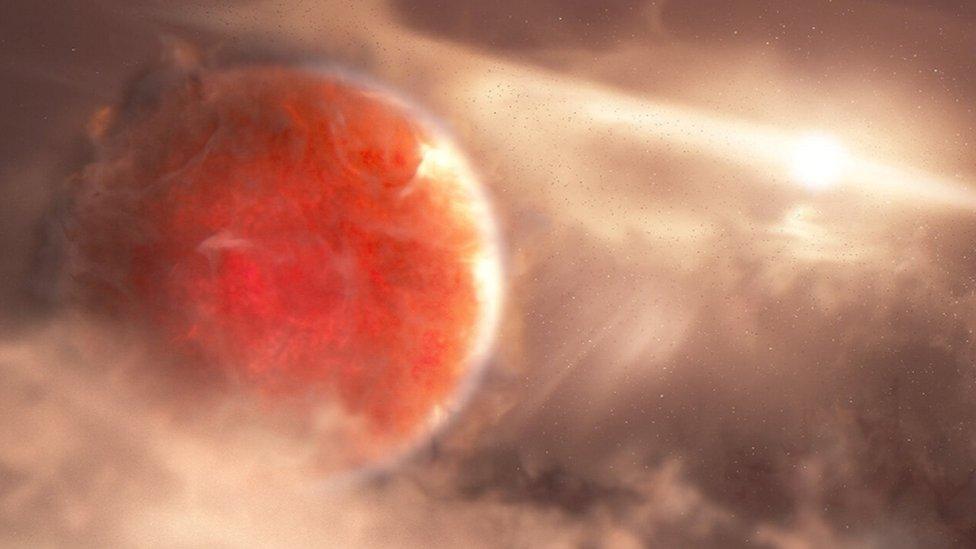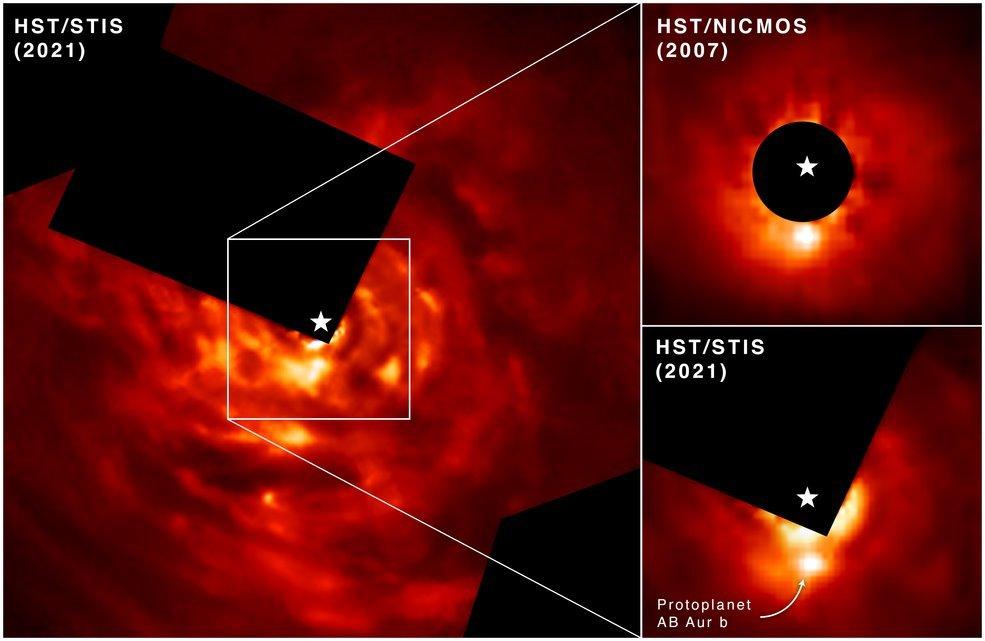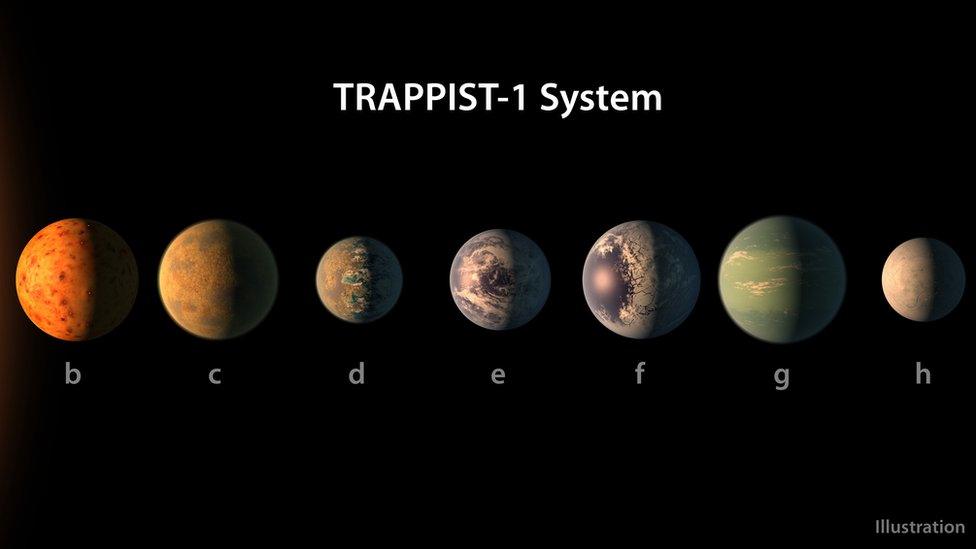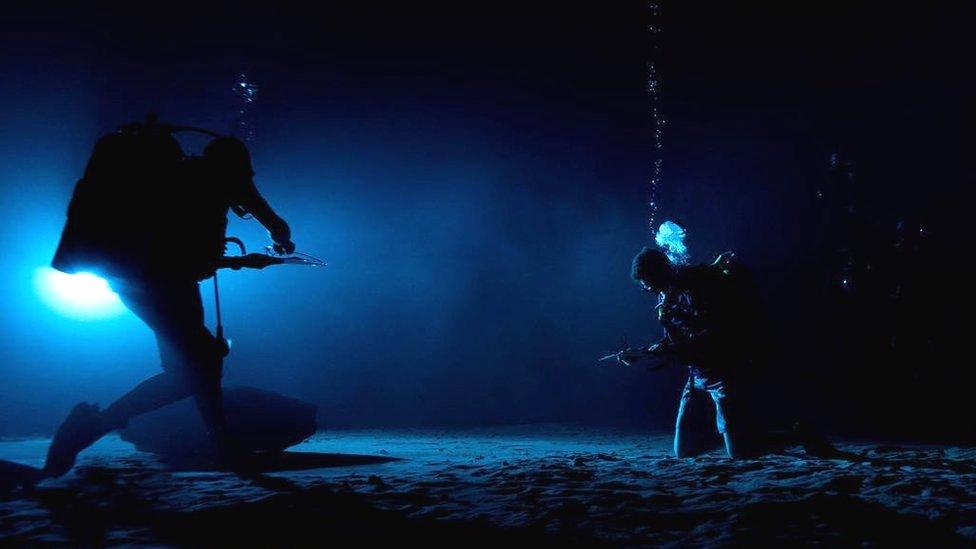AB Aurigae b: Hubble Telescope spots Jupiter-like planet forming in an unusual way
- Published
- comments

The exoplanet is about 2.4 times larger than our Sun and almost 60 times brighter
Scientists have spotted a giant planet, believed to be about nine times the size of Jupiter, at its early stage of being made.
It's a protoplanet, which means it is in the process of forming, and is coming together through an "intense and violent process" involving gas and dust.
Like Jupiter and Saturn in our solar system, AB Aurigae b is a 'gas giant' - mostly made up of hydrogen and helium gas, with more swirling gases surrounding a smaller solid core.
It was found and is being studied by two different telescopes; the Subaru Telescope, based at the top of inactive volcano Mauna Kea, and Nasa's Hubble Space Telescope.
"We think it is still very early on in its 'birthing' process," said astrophysicist Thayne Currie of the Subaru Telescope and Eureka Scientific who was the lead researcher on the study.
"Evidence suggests that this is the earliest stage of formation ever observed for a gas giant."
Why is AB Aurigae b so special?
Planets normally form from a small rocky core with more solids being pulled in and building around that. When it gets big enough the forming planet starts pulling in gas and becoming a gas giant.
This relies on being close enough to a star, as it orbits, in order for the solid state to build up.
But AB Aurigae b orbits its host star at a huge distance of about 8.6 billion miles. That's more than two times further than the dwarf planet Pluto is from our Sun. So the usual process, of building from a rocky core doesn't seem to add up - scientists say it's too far away from its star for this to happen.
"This process cannot form giant planets at large orbital distance, so this discovery challenges our understanding of planet formation," the study's co-author Olivier Guyon of the Subaru Telescope and the University of Arizona said.

Nasa's Hubble Telescope has captured several images of the exoplanet which has has moved in an anticlockwise motion over time
Instead, the researchers think AB Aurigae b was formed in a different way.
Orbiting a star is a disk made up of gas, dust, asteroids and fragments. A circumstellar disk. If an area of the disk is packed with enough of this stuff and cools enough it may cause gravitational collapse - when matter, or stuff, is pulled inwards.
According to scientists, this pulling inwards can result in the formation of a gaseous "protoplanet," - the very beginnings of a planet.
But until now, scientists haven't been able to directly see such a process taking place. Now they believe this could be how AB Aurigae b was able to form at such a great distance from its host star.
What else makes AB Aurigae b cool?
The Big Question: How are planets named?
So far, around 5,000 planets beyond our solar system, which are known as exoplanets, have been identified and AB Aurigae b is among the largest. The two-million-year-old protoplanet about 2.4 times larger than our Sun and almost 60 times brighter.
It's currently approaching the maximum size to be classed as a planet rather than a brown dwarf, which is a body which has a mass between that of a planet and a star.
It's discovery paves the way for further studies looking into how protoplanets are formed.
- Published20 April 2023

- Published23 February 2017

- Published8 February 2022

